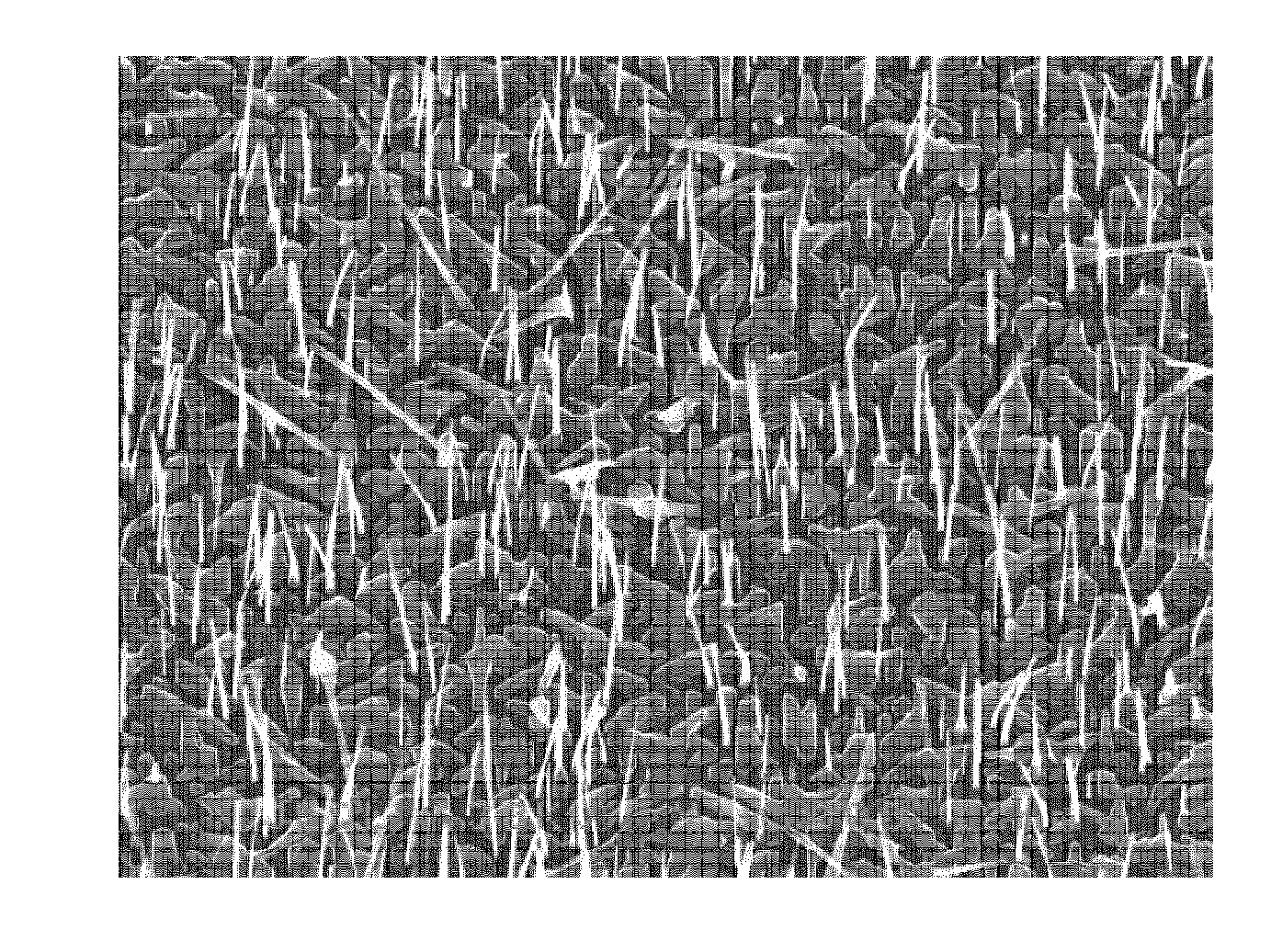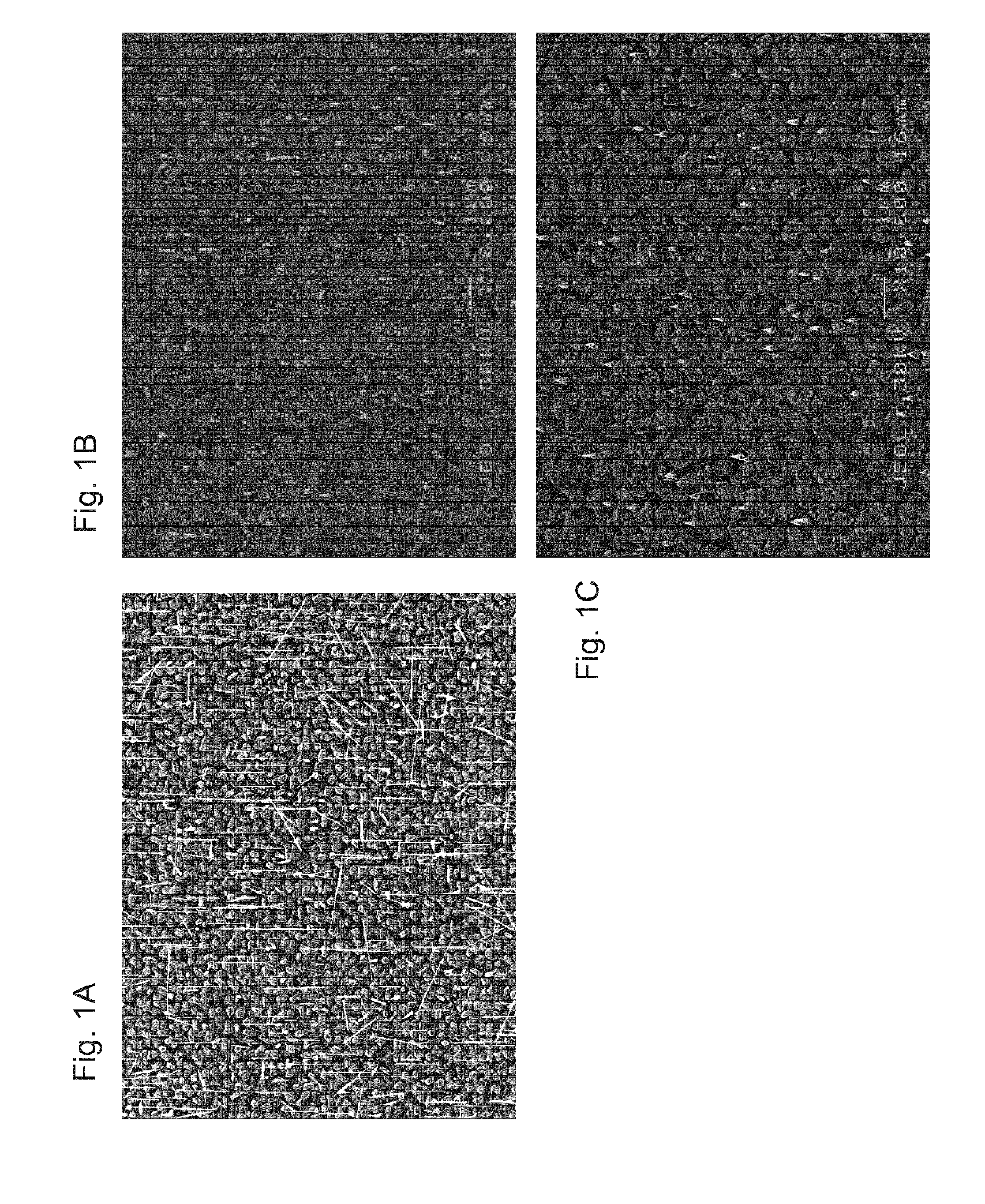Nanostructure, nanostructure fabrication method, and photovoltaic cell incorporating a nanostructure
a nanostructure and photovoltaic cell technology, applied in the field of nanostructures, can solve the problems of degrading optoelectronic properties and unfavorable growth of such nanostructures, and achieve the effects of promoting light reflection, promoting light reflection, and promoting separation of charge carriers
- Summary
- Abstract
- Description
- Claims
- Application Information
AI Technical Summary
Benefits of technology
Problems solved by technology
Method used
Image
Examples
Embodiment Construction
; FURTHER OPTIONS AND PREFERENCES
[0049]In the examples of the invention discussed below, molecular beam epitaxy was used as the growth technique. However, the teaching herein may be equally applicable to other epitaxial growth techniques, e.g. MOVPE.
[0050]FIGS. 1A, 1B and 1C show three nanostructure growths which illustrate that the maximum group V / III ratio which can be used in the MBE configuration for these Ga-assisted GaAsP growth is lower than what can be used for the known Ga-assisted GaAs growth.
[0051]The experimental parameters used for the growths shown in FIGS. 1A, 1B and 1C are shown in the following tables. The flux parameters are expressed as beam equivalent pressures in Torr (1 Torr being approximately 133.3 Pa). The growth temperatures were measured with a pyrometer.
TimeTemperatureFIG. 1AGa fluxAs fluxP flux(mins)(° C.)Growth8.72 × 10−81.06 × 10−5—20630
TimeTemperatureFIG. 1BGa fluxAs fluxP flux(mins)(° C.)Growth8.72 × 10−85.3 × 10−65.3 × 10−620630
Tem-pera-TimetureFIG....
PUM
| Property | Measurement | Unit |
|---|---|---|
| band gap | aaaaa | aaaaa |
| temperature | aaaaa | aaaaa |
| temperature | aaaaa | aaaaa |
Abstract
Description
Claims
Application Information
 Login to View More
Login to View More - R&D
- Intellectual Property
- Life Sciences
- Materials
- Tech Scout
- Unparalleled Data Quality
- Higher Quality Content
- 60% Fewer Hallucinations
Browse by: Latest US Patents, China's latest patents, Technical Efficacy Thesaurus, Application Domain, Technology Topic, Popular Technical Reports.
© 2025 PatSnap. All rights reserved.Legal|Privacy policy|Modern Slavery Act Transparency Statement|Sitemap|About US| Contact US: help@patsnap.com



